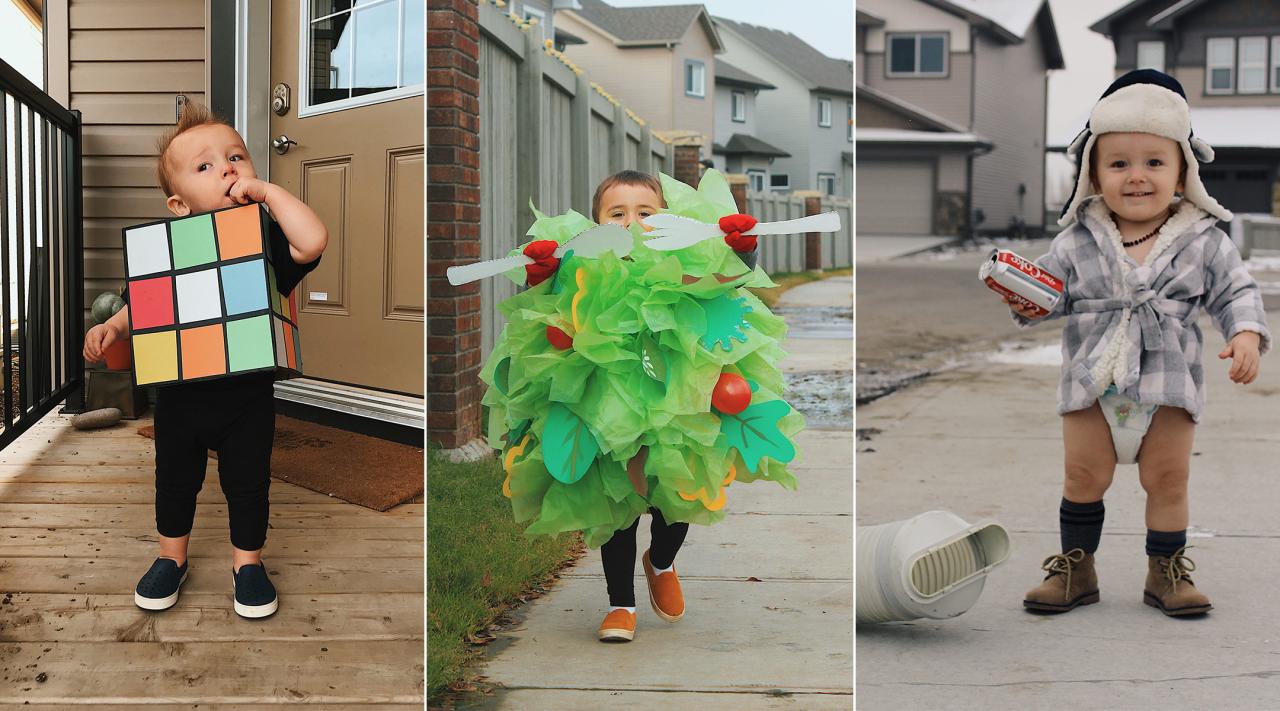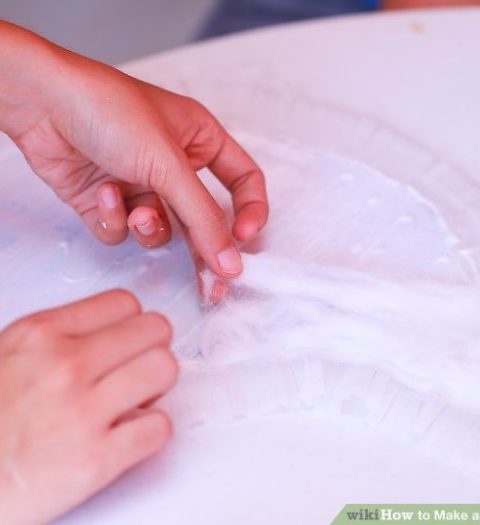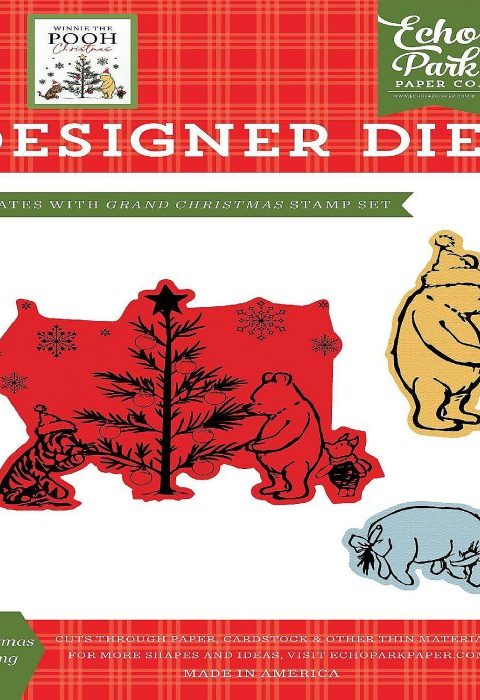Material Selection & Sourcing

Diy toddler costume with a pet – Creating adorable and safe DIY costumes for your toddler and pet requires careful consideration of the materials used. The right materials will ensure comfort, durability, and safety for both your little ones. Choosing wisely also impacts the overall look and feel of your finished creations. Let’s explore the options available.
Material Categories by Cost and Durability
The selection of materials significantly influences the final product’s cost and lifespan. Understanding this helps you make informed decisions based on your budget and desired longevity.
- High-Cost, High-Durability Materials: These include high-quality fabrics like cotton twill, linen, or durable polyester blends. These are generally more expensive but offer superior strength and longevity, making them ideal for costumes that will be worn repeatedly or handled roughly. For example, a durable cotton twill could withstand multiple washings without significant wear, perfect for an active toddler’s costume.
Crafting a delightful DIY toddler costume involving a beloved pet can be a fun family project. The creativity extends beyond just the little one; for instance, consider coordinating outfits with your partner, drawing inspiration from the many clever ideas available on sites like diy halloween costumes for couples for added festive flair. This ensures everyone feels the Halloween spirit, while the toddler’s costume remains the adorable centerpiece involving their furry friend.
- Mid-Range Cost, Moderate Durability Materials: Flannel, quilting cotton, and some blends of cotton and polyester fall into this category. They offer a good balance between cost and durability, suitable for costumes intended for occasional wear. A flannel shirt repurposed for a costume, for instance, provides warmth and decent durability without breaking the bank.
- Low-Cost, Lower Durability Materials: Felt, inexpensive fleece, and some lightweight cotton fabrics are budget-friendly but may not withstand frequent wear and tear. These are best suited for single-use costumes or those requiring less robust construction. Felt, while inexpensive, is prone to fraying if not handled carefully.
Using Recycled or Repurposed Materials
Repurposing existing materials offers significant environmental and economic advantages.
- Pros: Using recycled materials reduces textile waste, lowers costs significantly, and often results in unique and creative costume designs. Old clothing, fabric scraps, and even discarded packaging can be transformed into costume elements. For example, an old t-shirt could become a charming dog’s vest.
- Cons: Repurposed materials may have limitations in terms of color, size, and condition. Careful inspection is crucial to ensure the materials are clean, safe, and structurally sound. Pre-existing stains or damage might limit the design possibilities. Also, the fabric’s prior use might limit its suitability for sensitive skin.
Selecting Safe and Comfortable Fabrics for Toddlers and Pets
Safety and comfort are paramount when choosing fabrics for young children and animals.
- Toddlers: Opt for soft, breathable natural fibers like 100% cotton or linen. Avoid materials that are irritating, rough, or contain potentially harmful dyes. Always check labels for certifications indicating the fabric is safe for children. Loose-fitting costumes are preferable to prevent overheating and restrict movement.
- Pets: Choose fabrics that are lightweight, breathable, and won’t irritate their skin. Avoid anything with small, detachable parts that could be ingested. Ensure the costume allows for freedom of movement and doesn’t restrict breathing or circulation. Consider using soft fleece or cotton for pet costumes.
Construction Techniques & Patterns

Creating adorable DIY costumes for your toddler and pet requires careful consideration of both comfort and durability. The following techniques prioritize ease of construction while ensuring the costumes will withstand the playful energy of your little ones and their furry friends. We will explore straightforward methods suitable for beginners, focusing on simple patterns and adaptable designs.
Simple Running Stitch for Toddler and Pet Garments
The running stitch is a fundamental sewing technique ideal for beginners. Its simplicity allows for quick construction, making it perfect for creating basic toddler and pet costumes. To execute a running stitch, begin by threading your needle with a strong thread, matching the color of your fabric. Make small, even stitches along the seam line, consistently spacing them approximately ¼ inch apart.
After completing a row of stitches, leave a short tail of thread before starting the next row. This technique is excellent for seams requiring flexibility, such as the edges of a cape or a simple tunic. For pet costumes, this method is particularly useful for creating lightweight accessories like collars or simple head coverings. The flexibility of the stitch ensures the costume won’t restrict movement.
Whip Stitch for Neat Finishes
The whip stitch offers a clean and durable finish for seams and edges. It’s particularly useful for attaching different fabric pieces together or hemming edges to prevent fraying. To perform a whip stitch, use a needle and thread, and work along the edge of the fabric. The stitch consists of catching the edge of one fabric piece with each stitch, then wrapping the thread around the edge to create a neat, secure seam.
This technique works well for attaching appliqués to a toddler’s costume or creating a neat finish on a pet’s hat. The small, closely spaced stitches create a strong and aesthetically pleasing finish. It is especially helpful in creating a robust and durable seam that can withstand the inevitable tugging and pulling that a pet costume might experience.
Overcast Stitch for Preventing Fraying
The overcast stitch is a simple yet effective method for preventing fabric edges from unraveling. This is crucial for maintaining the integrity of your costumes, particularly for materials that fray easily. To overcast, use a needle and thread, and work along the raw edge of the fabric. Each stitch catches a small portion of the fabric edge, effectively securing it and preventing it from fraying.
This is an ideal technique for finishing the edges of a toddler’s cape, the hems of a pet’s shirt, or securing any cut edges to prevent unraveling. This stitch adds a professional touch while ensuring longevity and preventing fabric damage from repeated wear and tear.
Simple Toddler Costume Pattern, Diy toddler costume with a pet
A basic tunic-style costume is easily adaptable for both toddlers and pets. Imagine a simple rectangle of fabric, twice the width of the toddler’s chest and long enough to reach their knees. Cut a semicircle at the neckline for comfort. For the sleeves, cut two smaller rectangles, and attach them to the sides of the main rectangle.
To adapt this for a pet, simply adjust the dimensions proportionally. Measure your pet’s chest and back length. A smaller rectangle will suffice for the pet’s tunic. The simplicity of this pattern allows for easy customization with embellishments or additional details. This versatile pattern can be used as a base for various themed costumes, simply by adding different decorative elements.
Creating Custom Pet Accessories
Creating custom pet accessories requires basic crafting materials and a bit of creativity. For a simple pet hat, use felt or fleece cut into a desired shape, such as a circle or a pointed hat. Sew the edges together, leaving a small opening to fit your pet’s head. For a collar, cut a strip of fabric or ribbon, and sew the ends together, adding a buckle or Velcro closure for easy adjustment.
Embellishments like ribbons, buttons, or small patches can add a personalized touch. These accessories can be designed to complement the toddler’s costume, creating a cohesive and adorable duo. For example, if the toddler is dressed as a ladybug, the pet could wear a ladybug-themed hat and collar. This creates a visually appealing and coordinated look.
Popular Questions: Diy Toddler Costume With A Pet
What if my pet hates wearing costumes?
Start with short periods of time and lots of positive reinforcement (treats!). If they really resist, maybe skip the full costume and opt for a cute accessory instead.
How do I ensure the costume is safe for my toddler and pet?
Avoid small parts that could be swallowed, use non-toxic materials, and ensure everything is securely fastened. Supervise them closely when wearing the costumes.
What if I don’t know how to sew?
No worries! Many costume ideas can be made using no-sew methods like gluing, fabric tape, or even repurposing old clothes. Get creative!
Can I use old clothes to make the costumes?
Absolutely! Repurposing old clothes is a fantastic way to save money and be eco-friendly. Get crafty and give those old clothes a new life!






